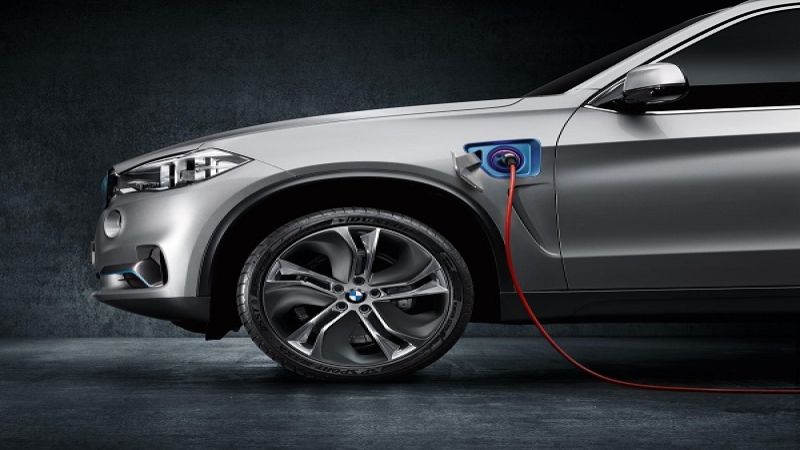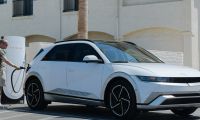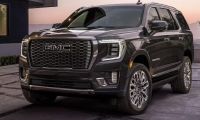Exactly three years ago Torque News ran a story called "Why hybrid luxury SUVs make sense." Apparently some automakers read Torque News. 18 months ago when Tesla was still pretending that the new Model X was going to be a 2014 model, we went out on a limb and predicted that BMW’s electrified X5 might beat the Tesla to market. As of now, the race is still too close to call, but BMW issued press releases this week indicating a fall 2015 US launch for the plug-in X5. Tesla is now also hoping for that time frame, but who knows? Interestingly, Volvo’s XC90 Plug-in is also slated to arrive right around that time. Here’s what to expect from the new BMW xDrive40e.
BMW X5 xDrive40e Plug-in
You can call it what you want, but we are going to nick-name this vehicle the X5 Plug-in. The new all-wheel-drive green machine starts with BMW’s X5, but with the baby 2.0-liter turbocharged engine we all know as the “228” under the hood. To this BMW will add an electric drivetrain featuring enough oomph and lithium-ion batteries to enable the vehicle to travel in certain circumstances on electric power alone. BMW is using an 8-speed transmission from ZF rather than a CVT. That is refreshing. The total system power is 308 horsepower and 332 lb-ft of torque. Much of which will be available just off idle.
When in EV-only mode, the new BMW X5 Plug-in will be able to travel up to 13 miles without using its gas engine. Like most plug-ins, that will come with some performance parameters, but that is fine. The genius of plug-ins is that they use the electric drive when it makes the most impact. If you want full acceleration, or when cruising on the highway the hybrid/gasoline drive is more efficient, so that is the way the vehicle moves itself. If you want to creep along downtown and emit zero tailpipe emissions, you can. The EV drive has just 111 hp on its own and 184 lb-ft of torque. That will do for sedate city driving. Normally the EV-only mode cuts out on the BMW X5 Plug-in at 45 mph, but if you want to waste energy, the X5 Plug-in will allow you to over-ride that and burn electrons up to 75 MPH max. All the automakers make plug-ins this way now so that people that have never owned a plug-in will be impressed.
BMW X5 xDrive40e Efficiency and Performance
BMW says the new X5 Plug-in (or X5 xDrive40e if you prefer) will likely achieve 55 MPGe. Volvo says its XC90 might get as much as 59 MPGe. Nobody except the EPA and CAFE gives a hoot about that number though, nor should you. BMW has not said what the vehicle’s EV efficiency is yet, nor did it say what the X5 Plug-in will return when driven as a hybrid (without any EV miles factored in). Smart. There is no real accepted standard yet to discuss this aspect of plug-in EVs. Our guess? 29 to 31 MPG as a hybrid. Just like the Lexus RX450h and Highlander Hybrid have returned now for ten years and two generations.
Like all BMWs, the X5 xDrive40e will scoot to 60 MPH. The company says 6.5 seconds. If you need to get to 60 faster than that in a big SUV while displaying your green accessory perhaps the Tesla Model X is for you. It will do much better, but then there is that whole “only electricity” thing.
Lexus, Toyota, Audi, and Nissan already offer gasoline hybrid SUVs this size that have green credibility. If the BMW X5 xDrive 40e, Tesla Model X, and Volvo XC90 SUVs with a cord do well in the marketplace, expect those automakers to offer plug-in versions. It will take them about 15 minutes to make the conversion and create the marketing info.
Related Stories:
2015 Tesla Model X or Lexus LF-NX Hybrid - which is the most exciting?
2014 BMW X5 will now with autopilot for beginners
Tesla’s industry influence on display in 2016 Volvo XC90
Why hybrid luxury SUVs make sense
Note: BMW has not assigned a model year to its new X5 xDrive40e as far as we can determine. So we went with 2016.













Comments
The Tesla Model X is expected
Permalink
The Tesla Model X is expected to have a 10% less range than the Model S which puts it at 243 miles EPA. PHEVs with tiny EV ranges are terrible competition for long range BEVs. The average American drives 35 miles per day or more. That's why the Chevy Volt came out with a 35-mile range, so people could do all of their day-to-day driving on electricity and have the gas engine for the occasional long trip. These plug-in hybrid SUVs with tiny ranges would burn gas almost every single day. It's a tiny step in the right direction, but we expect more out of BMW. They are supposed to be a technologically advanced car company.
It's as if they really don't care. Adding enough batteries to give it decent range (>30 miles) and performance in EV mode would have made it a much better vehicle. Larger, better batteries would enable the owners to drive over 90% of the time in EV mode, potentially saving money in the long run and making it a more exciting vehicle to drive.
The xDrive40e will get you up
Permalink
The xDrive40e will get you up a mountain with minimal expense at the pump, and greatly reduced emissions. For luxury buyers wanting green cred, that should be a far more attractive selling point than driving over imaginary boulders.